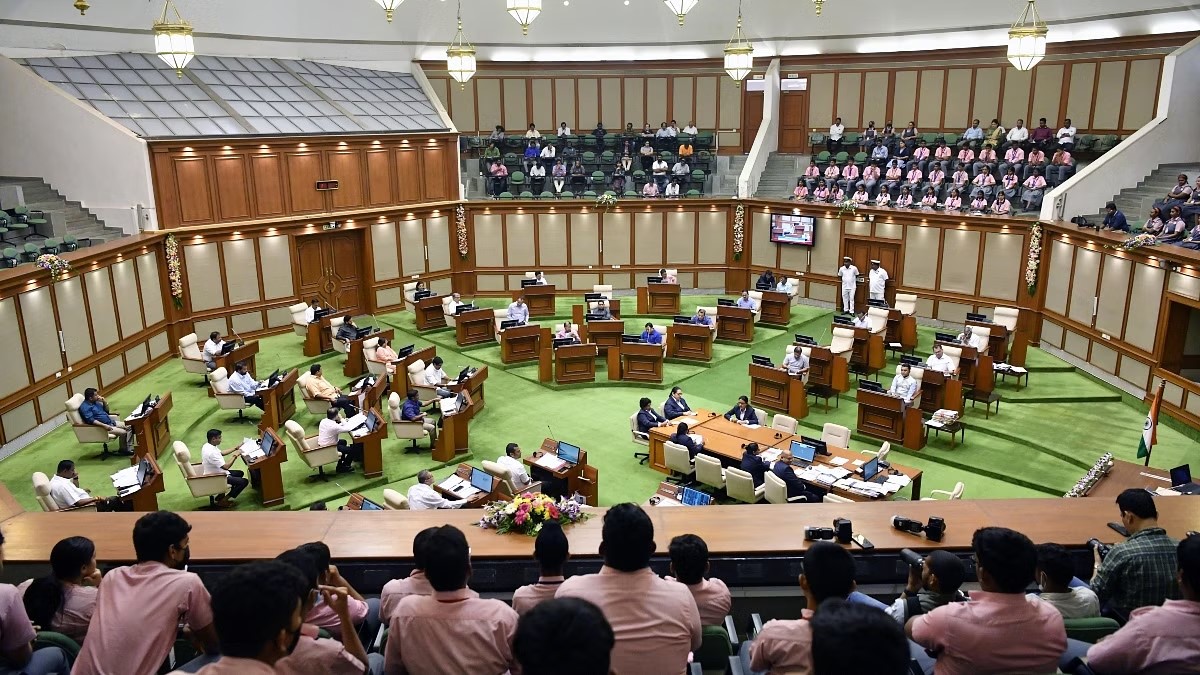The cumulative effect of exchanges in the Assembly is not merely an inventory of grievances but a snapshot of Goa’s dynamic yet imperfect governance ecosystem

The Goa Legislative Assembly session held on 25th March, 2025 offered a tableau of participative democracy at work.
Questions tabled by Members of the Legislative Assembly (MLAs) and the responses offered by the respective Ministers displayed a structured engagement pertaining matters of public interest.
Does the delivery of answers to the questions posited within the constraints of time-bound oral and written formats genuinely reflect the Assembly’s intent to both scrutinise executive decisions and surface persistent systemic inefficiencies or is this merely an exercise of electoral appeasement?
Ideally, such proceedings ought to serve as a procedural reaffirmation that the Goa Vidhan Sabha remains the central forum for democratic accountability in the State.
Mining sector
A significant discussion arose around illegal mining and recovery of dues, raised under Starred LAQ No. 3B. The Chief Minister, in his capacity as Minister for Mines and Geology, confirmed that dues owed by several companies, including Sesa Mining Corporation Ltd remain unpaid, even as some of these firms have recommenced operations under fresh leases (Government of Goa, 2025).
Although the Mineral (Auction) Rules, 2015, place no express bar on participation by such defaulters, the continued export of ore — notably 378,963.06 tonnes from Block-I at Bicholim by Vedanta Ltd. — despite outstanding liabilities, invited reflection on the moral underpinnings of resource governance. It was revealed that contractors such as SKK Infra Solutions Pvt. Ltd. had begun ore handling operations, even while machinery registration applications remained under process — an indication of procedural leniency (Government of Goa, 2025).
Casinos and regulation
In a parallel stream of questioning, the issue of offshore casinos and their regulatory governance was raised with renewed urgency. Unstarred LAQ No. 100 revealed that while permissions had been granted to six offshore casino vessels operating in the River Mandovi, no clear framework exists for phasing out these floating casinos or relocating them to designated zones onshore.
Although revenue generated through licensing fees and entry levies has often been cited as a justification for continuation, concerns over their proximity to residential and heritage precincts persist. The response by the Minister for Home reiterated that enforcement against illegal gaming activities had been undertaken, including 18 raids and over 30 cases registered under the Goa Public Gambling Act (Government of Goa, 2025). Yet, no definitive roadmap for the regulation, relocation, or eventual restriction of casinos was presented.
Mundkarial delays
and civil friction
Starred LAQ No. 002A, raised by MLA Premendra Shet, brought attention to the protracted pendency of Mundkarial disputes. Though the Goa Mundkar Act, 1975, was designed to protect dwelling house rights of tenants (mundkars), the backlog of unresolved cases in talukas such as Pernem and Bicholim shows that procedural delays and administrative overburden continue to hamper delivery of relief (Government of Goa, 2025).
The responses point to valid institutional burdens: Mamlatdars presiding over multiple jurisdictions, including mutation and tenancy, in addition to executive responsibilities such as law and order and election duties. Nevertheless, the legislative forum was used to re-emphasise that structural reforms must be undertaken if land justice is to be meaningfully administered in rural Goa.
Policing the police
The issue of police misconduct featured prominently in Starred LAQ No. 001C, also tabled by MLA Jit Arolkar. The annexed list of police personnel accused of various offences — from hurt and molestation to cheating and even murder — illustrates a pattern that requires robust institutional mechanisms of accountability (Government of Goa, 2025).
While the government cited the use of departmental enquiries, punishments such as censure and pay reductions, and regular sensitisation efforts such as Sampark Sabhas, the prevalence of serious charges and prolonged trials indicates that more decisive structural safeguards may be warranted.
River desilting
and ritual spaces
Environmental and cultural concerns converged in the query raised through Starred LAQ No. 002B on desilting the Valvanti River and constructing a retaining wall near Dattawadi Temple. While the estimates for both projects have been prepared, the lack of NOC from landowners continues to stall progress (Government of Goa, 2025).
This highlights a chronic administrative disjuncture — the tension between bureaucratic readiness and ground-level consensus — which continues to plague the environment amidst infrastructure implementation endeavours in Goa’s hinterlands.
Tuem Electronic City
Through Starred LAQ No. 001A, the issue of inadequate connectivity to Tuem’s Electronic City — housing the Electronics Manufacturing Cluster — was raised. While the existing 4–5 metre-wide road provides minimal access, a 4-lane approach road has been proposed, and a detailed project report (DPR) has been initiated (Government of Goa, 2025).
The Department of Public Works informed the House that land acquisition procedures are currently pending before the Deputy Collector’s office, and that project execution would be completed within 18 months post work-order. Although encouraging, the timeliness of this initiative will depend on sustained inter-departmental follow-through.
The cumulative effect of these exchanges is not merely an inventory of grievances but a snapshot of Goa’s dynamic yet imperfect governance ecosystem. When questions are posed on subjects as wide-ranging as land tenure, mining royalties, police misconduct, and digital infrastructure, they represent both public anxieties and democratic aspirations.
The responses, however defensive or bureaucratic, allow a measure of institutional reflection. The legislative process, therefore, should not be seen as a ritual of rhetoric but as a necessary checkpoint for administrative accountability. What remains critical is whether this performative vigilance translates into sustained executive responsiveness in the months that follow.